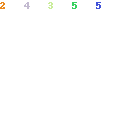Whole numbers are a fundamental concept in mathematics and are often one of the first concepts introduced to young learners. They serve as the building blocks of the number system and play a crucial role in various mathematical operations. In this tutorial, we will explore what whole numbers are and how they are used in mathematics.
Definition of Whole Numbers:
Whole numbers are a set of numbers that include all the natural numbers (positive integers) along with zero. In mathematical notation, whole numbers are represented as:
Whole Numbers (W) = {0, 1, 2, 3, 4, …}
Key points:
- Whole numbers are non-negative integers.
- They do not include fractions, decimals, or negative numbers.
- The set of whole numbers starts from zero and extends infinitely in the positive direction.

Characteristics of Whole Numbers:
Non-Negative: Whole numbers are always non-negative, which means they are greater than or equal to zero. This property makes them suitable for counting and representing quantities.
Counting: Whole numbers are used for counting and ordering. You can count objects, people, or events using whole numbers. For example, you can count the number of apples in a basket or the days in a week using whole numbers.
Operations: Whole numbers are used in various mathematical operations, including addition, subtraction, multiplication, and division. They are the basis for solving mathematical problems.
Examples of Whole Numbers:
- 0: Zero is the smallest whole number and represents the absence of quantity.
- 1, 2, 3, 4, …: These are the positive integers and are used for counting.
- Whole numbers can be used to represent quantities like the number of students in a classroom, the pages in a book, or the temperature in degrees Celsius when it’s above freezing.
Whole Numbers vs. Natural Numbers:
It’s essential to distinguish between whole numbers and natural numbers:
- Natural Numbers (N) = {1, 2, 3, 4, …}
- Whole Numbers (W) = {0, 1, 2, 3, 4, …}
Natural numbers start at 1 and extend infinitely, while whole numbers start at 0 and extend infinitely. Whole numbers include zero, which natural numbers do not.
Using Whole Numbers in Math:
Addition: Whole numbers are used for adding quantities. For example, if you have 3 apples and 4 more, you have a total of 7 apples.
Subtraction: Whole numbers are used for finding the difference between quantities. If you have 10 dollars and spend 3, you have 7 dollars left.
Multiplication: Whole numbers are used for repeated addition. For example, 5 x 3 means adding 5 three times, which equals 15.
Division: Whole numbers are used for dividing quantities into equal parts. If you have 12 candies and want to share them equally among 4 friends, each friend gets 3 candies.
Conclusion:
Whole numbers are a fundamental concept in mathematics. They are the set of non-negative integers that include zero and are essential for counting, basic arithmetic operations, and representing quantities. Understanding whole numbers is a crucial step in building a strong foundation in mathematics, and they are used extensively in everyday life for various purposes.